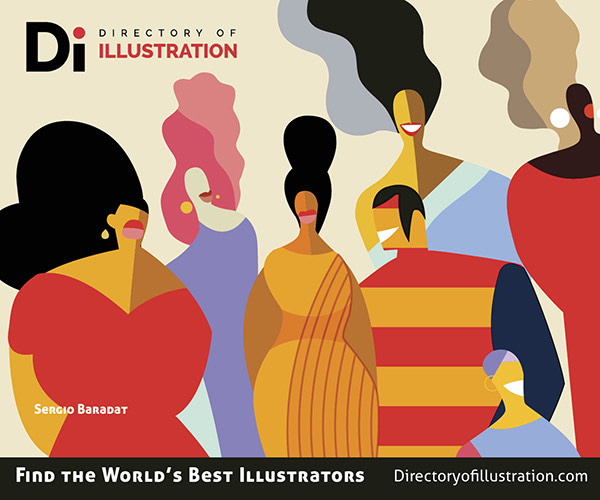
As an illustrator, I am often asked how I developed my unique style of drawing. I said in my last post that Agents is one of the holy grails of illustration. Well, Style is the other one.
The question of style is so pressing because we all perceive its importance. We understand what style is, how it works to unite and identify an artist’s body of work, and even how a given style makes us feel. We all perceive its importance, but we cannot put our finger on how to develop one for ourselves.
Personally, I think landing on a successful style is largely by accident. We discover something that works, that we like, that others seem to be drawn to. Then, over time, we organically work at it and it grows and evolves into its own thing. This is bad news — because I cannot tell you how you can go and have an accident on purpose. But there is good news: there are things you can do on purpose toward both discovering and developing your own style. Here are ten things to get you started:
- Define Your Goals. There is no overnight solution to this problem, but understanding what you want to achieve in your own style, or what you admire in others’ work, is a good goal to start out with.
- Pour Yourself Into Your Work. Style and personality emerge from experience and confidence. Just keep drawing. Over time, make an effort to identify what you like or think is working well. Aim to exude confidence in your work.
- Identify Your Heroes. Identify artists whose work you would define as having the kind of personality you’re looking for. Study them, emulate them, be inspired by them.
- Draw From Life. Learn how to draw well by carefully studying your subject.
- Draw From Heart. Then try drawing intuitively, from memory. Fill in the gaps in your memory with weirdness. Don’t try to be realistic — try just doing something new and see what happens.
- Be an Interpreter, Not an Imitator. A good drawing shows an underlying understanding of the subject or a creative interpretation of it. That is why it is important to draw from real life, because you never truly see things until you draw them. As you draw, you internalize the subject. Then it is easier to draw things like your subject from memory.
- Check In with Your Feelings. Pay attention to how you feel when you’re drawing in different ways. Do certain feelings relate to specific ways of drawing? Do you feel notably confident in certain situations? For me, there is a very specific confidence and joy I experience when drawing in a certain way. When I draw from this mode, I do my best work. This feeling is exuded in my work. Drawings are literally graphs of our souls — soul graphs. In the same way a seismograph charts movements in the earth, a drawing charts movements in our souls.
- Capture Lightning. The first sketch is the most accurate and least overthought soulgraph. The brain hasn’t had a chance to edit what comes through your mind to your hand. That is why the first sketch is usually the freshest and liveliest. The first sketch may not always be the most resolved, but you can learn a lot from it and do your best to apply it to a more refined and resolved drawing.
- Exude Confidence.Don’t show hesitation in your drawing. You might pause or hesitate off the page, but don’t show it in the final drawing — avoid drawing over lines, or doing light sketchy bits as you figure out a contour, for instance. It’s okay to do this for a first draft, but then trace the drawing with more confident, singular strokes. This is the trick to making your work look improvised, even after careful planning.
- Share Your Work. Share a lot and see what feedback you get. You may like how others react, or you my cringe. But how others respond to your work will absolutely influence how you draw. You will learn a lot about how your work affects others. People will make comments about certain qualities or techniques in your work, and you can use that to determine what to focus on and evolve — because of or in spite of what they say.
To summarize, developing your style involves being self -ware, disciplined, and patient. Unfortunately, this is not a new concept — I’m saying what almost every other illustrator would say. We all thought at one point that there was some magic elixir that, if we could just find it and pour it down our gullets, we’d emerge with our drawing superpowers. The honest truth is that you will just have to keep working at it, but perhaps after reading this, you can be more intentional about paying attention. The biggest clues to your style are not out there — not in the museums, not in illustration annuals, not on Pinterest, and not on Instagram. Rather, they are inside you. The way visual things make you feel, how you respond to them, what your own marks look like, and how they make others feel — these are not only the ingredients of your style, they ARE your style.








Excellent article! I feel very similar about my progression as an artist. There were some key elements in the piece that made me contemplate my style and niche. I’d love to get some feedback from you regarding my artworks I’ve made on WordPress and Facebook myself to see what elements come to you regarding the viewing of some of my works. How were you able to overcome some of the business aspects when creating your works for the public to buy or engage with?